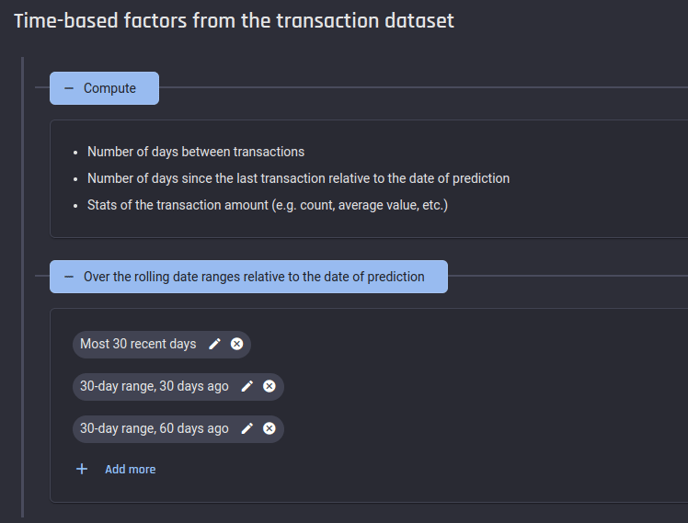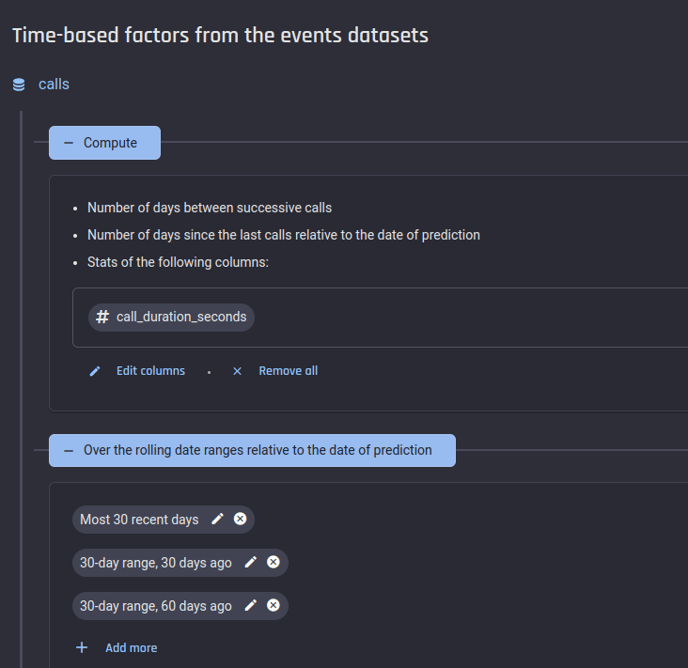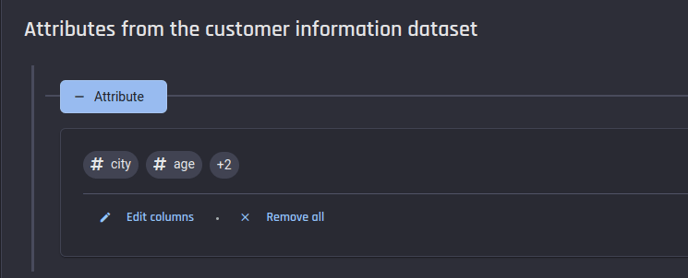This article explains the concept of "contributing factors" in the customer churn prediction template.
In the Customer Churn Prediction template, users need to provide data about customers and their activity from a relevant historical period. Predictive models are then built by the template, and the models learn to predict churn by analyzing the data provided to look for behaviours, trends, and general characteristics of customers that distinguish historical churners from non-churners. The template facilitates predictive modelling by narrowing the models' search for such distinguished characteristics to a specific set of stats and attributes (known as “features” in the machine-learning world). This set of characteristics potentially containing signals of churn are known as “contributing factors”.
While providing business-specific inputs during the app-building process, business users can leverage their domain knowledge and insider experience to configure the way contributing factors are generated from their data, thereby maximizing the resulting models' prediction quality.
For both the transactional and subscription options, there are two types of contributing factors that can be configured by users:
-
Time based factors
-
Attributes from the customer information dataset
Time based factors
Time based factors are generated based on:
| Transactional churn option | Subscription churn option | |
| Rolling date ranges | The rolling date ranges is relative to the point in time when a prediction is to be made, where signals or markers that predict a customer’s intention to churn can potentially be found. A default selection of rolling date ranges is provided, but can be modified by the user. | |
| Event timestamp column | The column containing the timestamps of the transactions | For each event dataset: The column containing the timestamps of the events |
| Input columns for stats computation | The transaction amount column | For each event-log dataset: Columns that are to be used to generate time based features. A default selection of columns is provided, but can be modified by the user. |
Transactional option in the churn template
For this option, the following are the time-based factors computed by the template over the chosen rolling date ranges:
-
Number of days between transactions
-
Number of days since the last transaction date, relative to the date or prediction
-
Stats of the transaction amount (e.g.: average value, standard deviation, etc.)
 Time-based factors from the transactional option in the customer churn template
Time-based factors from the transactional option in the customer churn template
Subscription option in the churn template
For this option, the Engine computes time-based factors from each event-logs dataset separately. It computes the the following factors over the chosen rolling date ranges for each event type:
-
Number of days between successive events
-
Number of days since the last event relative to the date of prediction
-
Stats (e.g.: average value, standard deviation, etc.) of chosen columns
 Time-based factors from the subscription option in the customer churn template
Time-based factors from the subscription option in the customer churn template
Attributes from the customer information dataset
Alternatively, for both churn template options, users can select “columns from the customer information dataset” that might affect a customer’s likelihood of churn:
 Attributes from the customer information dataset
Attributes from the customer information dataset
